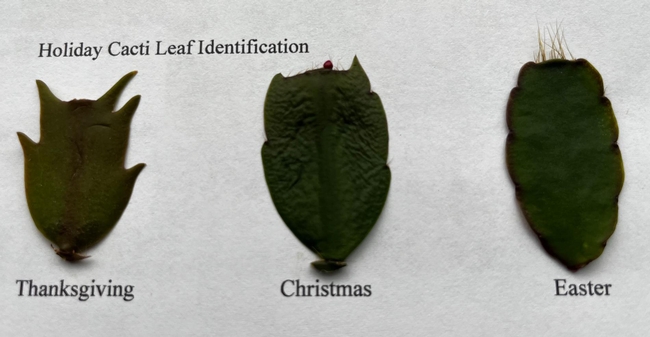(AKA Christmas Cactus, Thanksgiving Cactus, Easter Cactus, Crab Claw Cactus, or Schlumbergera)
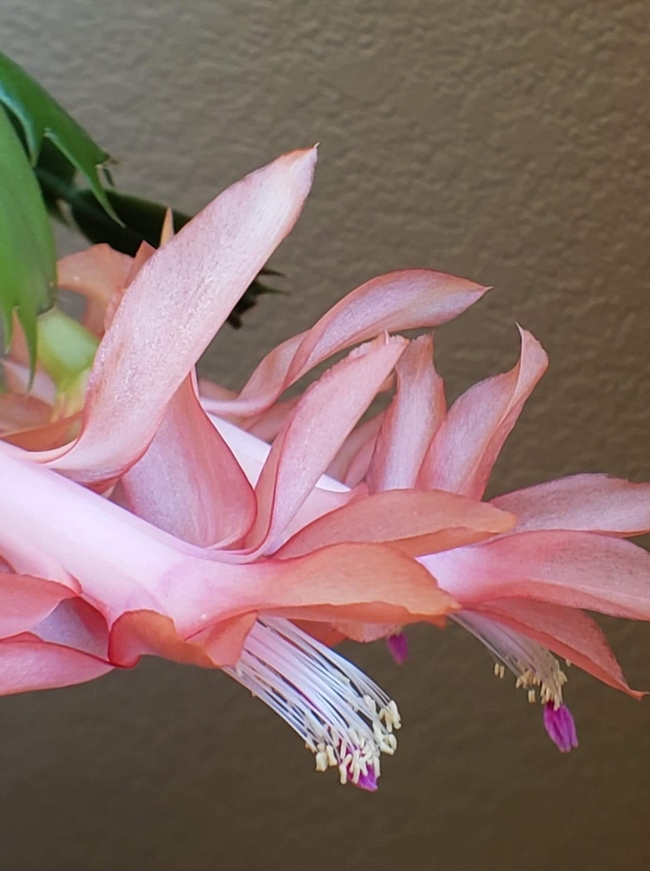
This showy, low maintenance plant is an indoor star around the holiday season. It blooms in a variety of reds, pinks, salmons, fuchsias, yellow, and pale beiges, I even saw a blue one recently being advertised on-line. They are natives of the coastal mountains of southeastern Brazil. Their native habitat is in high altitude (3,000 to 5,000 feet), moist rain forests where they are epiphytic, meaning they grow either on moss-covered tree branches or in rock crevices filled with decayed leaves and other vegetation, rather than in the ground.
If you're fortunate to have a Holiday cactus but aren't sure what kind of species it is, you can distinguish them by their leaves. Thanksgiving cactus (S. truncate) stem segments have pointed teeth (dentate), often with two large teeth at the end of the segment resembling a crab claw. Christmas cactus (S. x buckleyi) leaves are smoother, scallop-edged segments with somewhat drooping branches. And, Easter cactus (S. gaertneri) have very rounded leaves with small golden bristles at the ends.
Contrary to their “cactus” name, Schlumbergera need moisture and thrive in cooler temperatures making them an ideal house plant. They require humid moist conditions, a plus for most of our coastal residents. Schlumbergera can live outdoors in a shaded area and can be left outside as long as temperatures don't dip below 50 degrees. After that, it's best to bring them in. 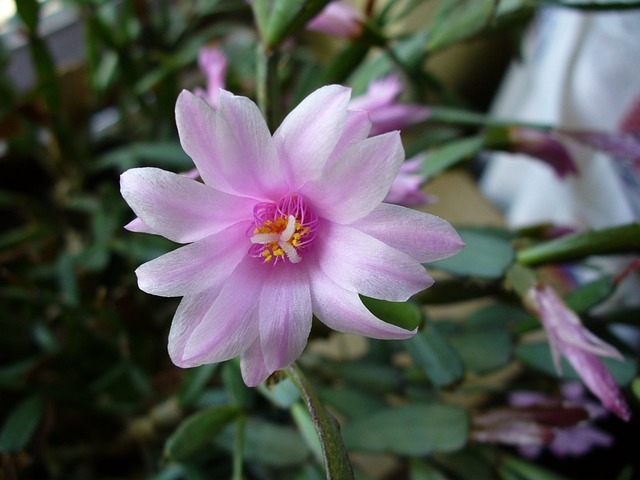
With proper care, these plants can live 50 years or more. Here are some pointers for growing them:
- They like to be root-bound and only require transplanting when the soil can no longer provide nutrients, about once every three years or so.
- When repotting, the potting mix should be loose and fast draining; a good slightly acidic cactus soil mix would work well.
- They will produce new growth and leaves when they are exposed to indirect bright light and when temperatures are between 50-70 degrees (their preferred temperature range).
- They can be fertilized every two to four weeks during the growing season using a well-balanced formulation such as 10-10-5. Either liquid fertilizer or a granular slow-release formulation may be used. Be sure to follow directions on the label when applying.
- Holiday Cacti should be allowed to dry out partially though not completely between waterings. Water when the top one or two inches of soil are dry.
- Holiday Cacti are temperature and light sensitive. To start their budding cycle, they require short days with 12-14 hours a day in total darkness (even ambient light should be avoided) and cool nighttime temperatures between 50-55 degrees. These conditions should be maintained starting about six to eight weeks ahead of their flowering period.
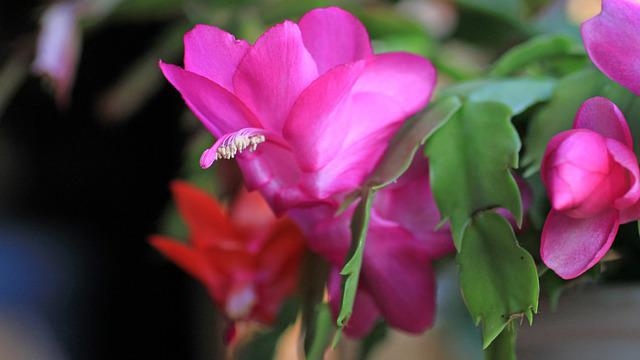 Thanksgiving Cactus
Thanksgiving Cactus - While in the budding cycle, water should be reduced. Once buds start to set, regular watering can be resumed, the plant can be moved to a lighter location and temperatures can be increased to between 60-65 degrees.
- Holiday Cacti usually remain in flower for four to six weeks and then will enter a rest period, followed by a new growth cycle. After they have bloomed, they can be pruned and shaped.
- They are super easy to start and you can use the pruned sections to start new plants. Allow the cut ends to dry (callus) for a few days, and then insert them about 1 inch deep in moist, clean potting mix (5 cuttings in a 6-inch pot).
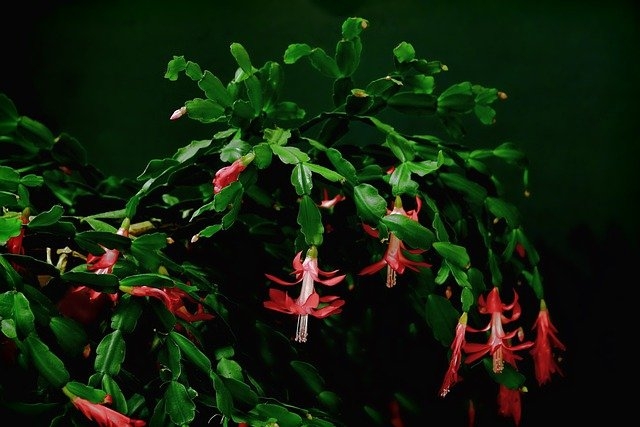
[1] P. Geisel and C. Unruh, Holiday Cacti, Publication 8114, UC Regents, 2004
[2] Amanda Ricker, Chronical Staff Writer, “145-Year-Old Christmas Cactus passed down through family” Dec. 9, 2009
Resources:
P. Geisel and C. Unruh, Holiday Cacti, Publication 8114, UC Regents, 2004
Perry, Ed. “The Christmas Cactus,” The Stanislaus Sprout, Regents of the University of California, Division of Agriculture and Natural Resources, December 14, 2020
Butte County Master Gardener's Blog, “Cactus from the Rain Forest,” November 26, 2021
Image Credits:
Leaf Identification, photo by Beverly Kukuk, used with permission
Pink Holiday Cactus, photo by Beverly Kukuk, used with permission
Christmas Cactus Image by Sabine from Pixabay
Thanksgiving Cactus Image by TonioG from Pixabay
Easter Cactus Image by gwendoline63 from Pixabay
